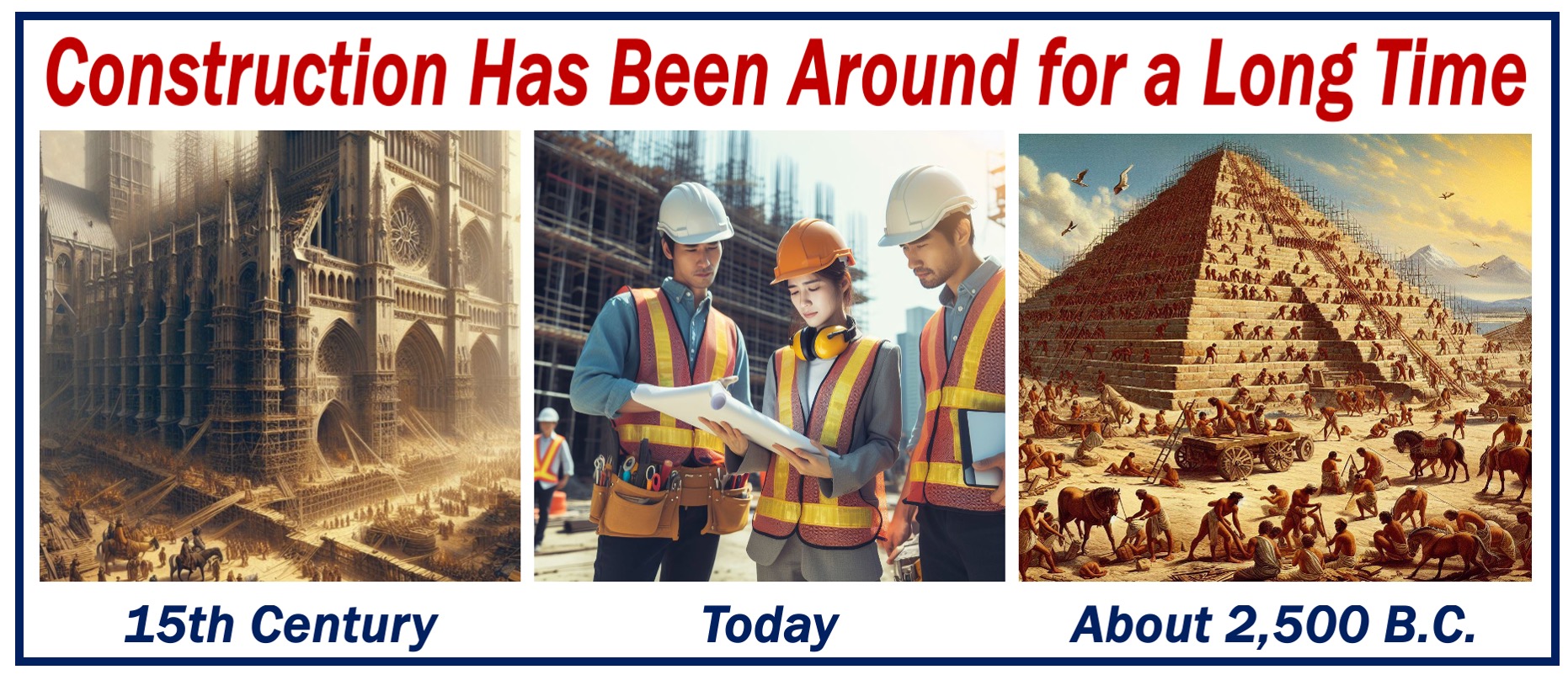Construction is the process of building or assembling infrastructure. Planning, designing, and financing are the first steps, and they continue until the project is built and functioning. This field includes a broad range of tasks involving the construction of real structures, such as roads, bridges, houses, larger buildings, and dams.
The Cambridge Dictionary has the following definitions of ‘construction’:
“1. The work of building or making something, especially buildings, bridges, etc. 2. The particular type of structure, materials, etc. that something has. 3. A building.”
Key phases in construction
Here are the main key phases:
-
Planning
Involves determining the resources required, budgeting, and the viability of the project.
-
Design
Architects and engineers create detailed blueprints and designs.
-
Financing
There are many ways to secure funding for a project, such as through investments, public funding, crowdfunding, or loans.
-
Construction
The process of physically building something.
-
Maintenance and renovation
Ensuring the structure remains functional and retains its longevity well beyond the initial construction phase.

Types of construction
There are many types of construction, including:
-
Residential
This includes homes, housing complexes, apartments, condominiums, and residential estates.
-
Commercial
Encompasses business-oriented structures such as hotels, malls, offices, retail stores, and business parks.
-
Industrial
Covers factories, processing centers, manufacturing plants, warehouses, and heavy industry facilities.
-
Infrastructure
Involves public works such as roads, bridges, utility systems, public transit systems, airports, and seaports.
-
Institutional
This category encompasses buildings designed for public services and community needs, including schools, hospitals, government buildings, museums, and public libraries. These structures are often funded by government entities and are central to community welfare and services.
Roles in construction
There are many roles in the construction industry, including:
-
Architects
These professionals design buildings and oversee their aesthetic elements, ensuring that the architectural vision is realized.
-
Engineers
Engineers ensure the structural integrity of the construction, focusing on the functionality and safety of the design.
-
Contractors
They oversee the construction work, managing the project and hiring subcontractors for specialized tasks.
-
Workers
This group includes a wide range of skilled labor, such as bricklayers, carpenters, electricians, plumbers, painters, plasterers, roofers, and welders, all of whom play vital roles in bringing construction projects to life.
Technological advancements in construction
Over the past few years, there have been many technological advancements, including:
-
Building information modeling (BIM)
A digital representation of a building’s functional and physical characteristics, aiding in efficient design and construction management.
-
Automation and robots
These technologies are employed for tasks like bricklaying, painting, and complex construction activities. Machines are particularly useful in hazardous situations, such as working at extreme heights or handling toxic materials.
-
Sustainable projects
This area focuses on green building practices and the use of sustainable materials, aiming to reduce environmental impact and promote energy efficiency.
Challenges and concerns
There are many challenges and concerns in the construction industry, such as:
-
Safety concerns
Ensuring the safety of workers on construction sites is paramount to prevent accidents and injuries.
-
Budget and time overruns
It’s crucial to complete projects on schedule and within the allocated budget, avoiding unnecessary expenses and delays.
-
Regulatory compliance
Adhering to the various rules, codes, and regulations is essential to ensure legal and safety standards are met.
-
Quality control
Maintaining high standards in building quality is key to ensuring the longevity and safety of the structures.
Video – What is Construction?
This video presentation, from our YouTube partner channel – Marketing Business Network, explains what ‘Construction’ means using simple and easy-to-understand language and examples.
Written by Nicolas Perez Diaz
